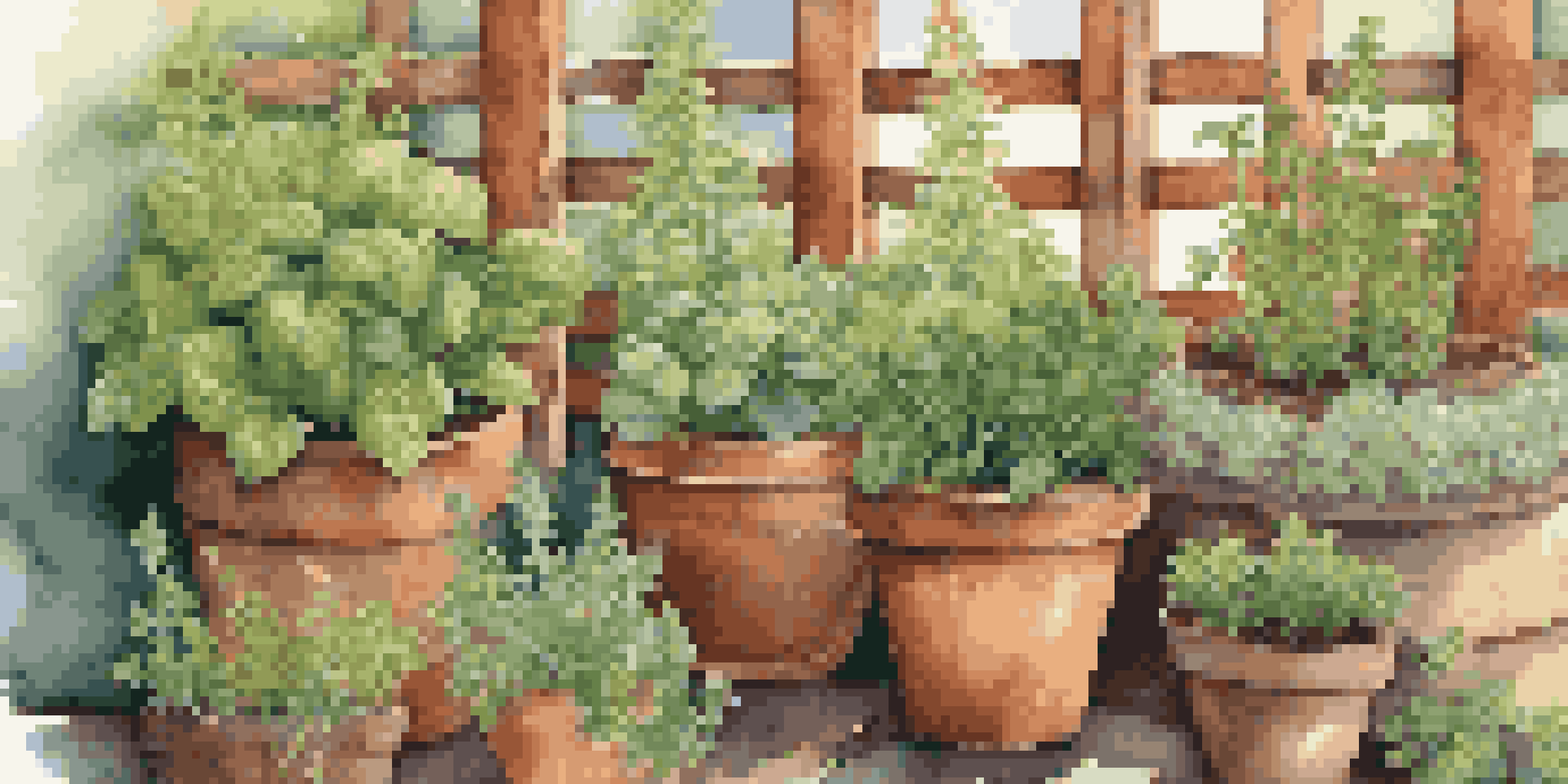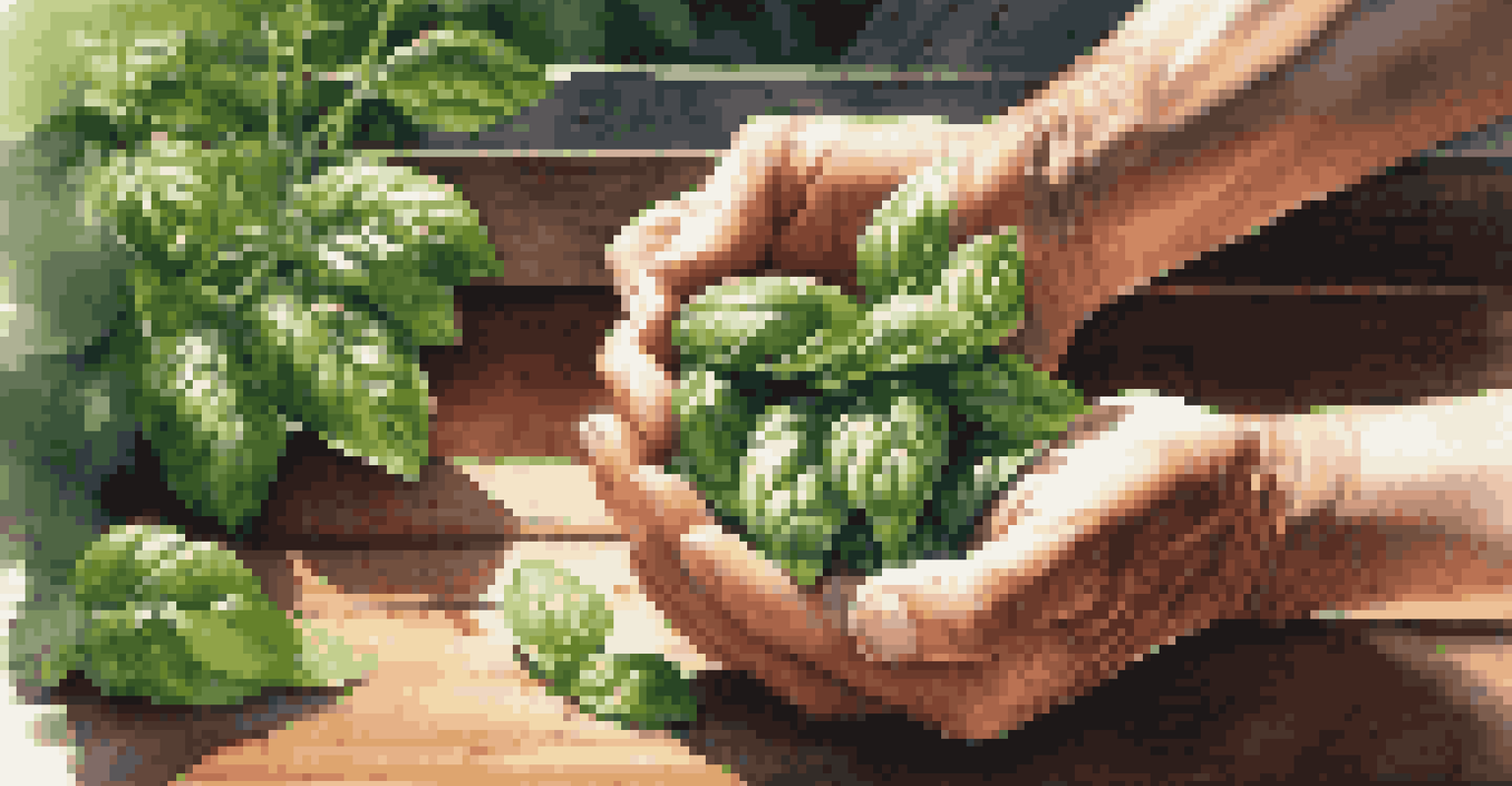How to Grow a Sustainable Herb Garden at Home

Choosing the Right Location for Your Herb Garden
The first step to a successful herb garden is selecting the perfect spot. Herbs thrive in areas with plenty of sunlight, ideally receiving at least six hours a day. Consider a south-facing window if you're growing indoors, or a sunny corner in your yard if you prefer outdoor gardening.
Gardening is a way of showing that you believe in tomorrow.
Additionally, think about accessibility. You’ll want to easily reach your herbs for regular care and harvesting. A location near your kitchen can make cooking with fresh herbs more convenient and enjoyable.
Lastly, consider the protection from strong winds and heavy rain. A sheltered spot will help your herbs flourish without the stress of harsh weather conditions.
Selecting Sustainable Herb Varieties
When it comes to selecting herbs, opt for varieties that are not only easy to grow but also sustainable. Basil, mint, and rosemary are popular choices that can thrive in various conditions. Choose herbs that are native to your region, as they naturally adapt to the local climate and require less maintenance.

Consider your culinary preferences when selecting herbs. Growing your favorite herbs can inspire creativity in the kitchen and encourage you to cook more at home. Plus, fresh herbs can elevate any dish, making even simple meals special.
Choose the Right Spot for Herbs
Select a sunny, accessible location with protection from harsh weather to ensure your herbs thrive.
Lastly, consider companion planting. Certain herbs, like basil and tomatoes, grow well together, benefiting each other while conserving space and resources in your garden.
Preparing Your Soil for Herb Growth
Healthy soil is the foundation of a thriving herb garden. Start by testing your soil to assess its nutrient levels and pH balance. Most herbs prefer well-draining soil with a pH between 6.0 and 7.0, so amendments may be necessary to achieve this balance.
The greatest gift of the garden is the restoration of the five senses.
Incorporate organic matter, such as compost, to enrich the soil and improve its texture. This not only provides essential nutrients but also enhances moisture retention, which is crucial for young herbs.
Finally, avoid using chemical fertilizers or pesticides, as these can harm the environment and affect the taste of your herbs. Stick to natural amendments and practices to promote sustainable gardening.
Sowing Seeds vs. Buying Seedlings
Deciding whether to sow seeds or buy seedlings can influence your gardening experience. Starting from seeds allows for more variety and a deeper connection to the growth process, but it requires patience and care to nurture them from tiny seeds to robust plants.
On the other hand, buying seedlings can be a great time-saver, especially for beginners. They offer a head start, allowing you to enjoy fresh herbs sooner without the fuss of germination and early care.
Opt for Sustainable Herb Varieties
Choose easy-to-grow, native herbs that align with your culinary needs for a successful and enjoyable gardening experience.
Consider starting with a mix of both methods to find what works best for you. This way, you can enjoy the satisfaction of growing from seed while also benefiting from established plants.
Watering Techniques for Healthy Herbs
Watering is crucial to your herb garden's success, but it's important to strike the right balance. Most herbs prefer soil that is consistently moist but not soggy. A good rule of thumb is to water when the top inch of soil feels dry to the touch.
Consider using a drip irrigation system or a watering can with a spout for easy and targeted watering. This helps avoid overwatering, which can lead to root rot and other issues. Grouping your herbs together can also simplify your watering routine.
Additionally, pay attention to seasonal changes. During hot summer months, your herbs may require more frequent watering, while cooler months may necessitate less. Adjusting your watering schedule accordingly will keep your herbs healthy and thriving.
Harvesting Herbs Sustainably
Harvesting is one of the most rewarding aspects of growing herbs. For sustainable practices, it's essential to pick wisely. Always use clean, sharp scissors to snip leaves or stems, ensuring you don’t damage the plant.
Try to harvest in the morning when the oils and flavors are at their peak. This not only enhances the taste but also encourages the plant to continue growing. Avoid taking more than a third of the plant at one time to allow for healthy regrowth.
Maintain Your Herb Garden Regularly
Consistent care, including weeding and seasonal rotation, is essential for a healthy and productive herb garden.
Don't forget to enjoy your harvest! Incorporate fresh herbs into your meals, share with friends, or even dry some for later use. This not only reduces waste but also enriches your culinary experiences.
Maintaining Your Herb Garden Year-Round
Maintaining your herb garden doesn't stop once you've planted and harvested. Regular care is essential to keep your herbs healthy and productive. This includes weeding, monitoring for pests, and pruning to encourage bushier growth.
Consider rotating the herbs you grow each season to prevent soil depletion and maintain a vibrant garden. This practice not only helps improve soil health but also keeps your cooking exciting with new flavors.

Lastly, don't forget to enjoy the process. Gardening can be a therapeutic and rewarding hobby. Embrace the challenges and celebrate your successes, big or small, as you cultivate your sustainable herb garden.